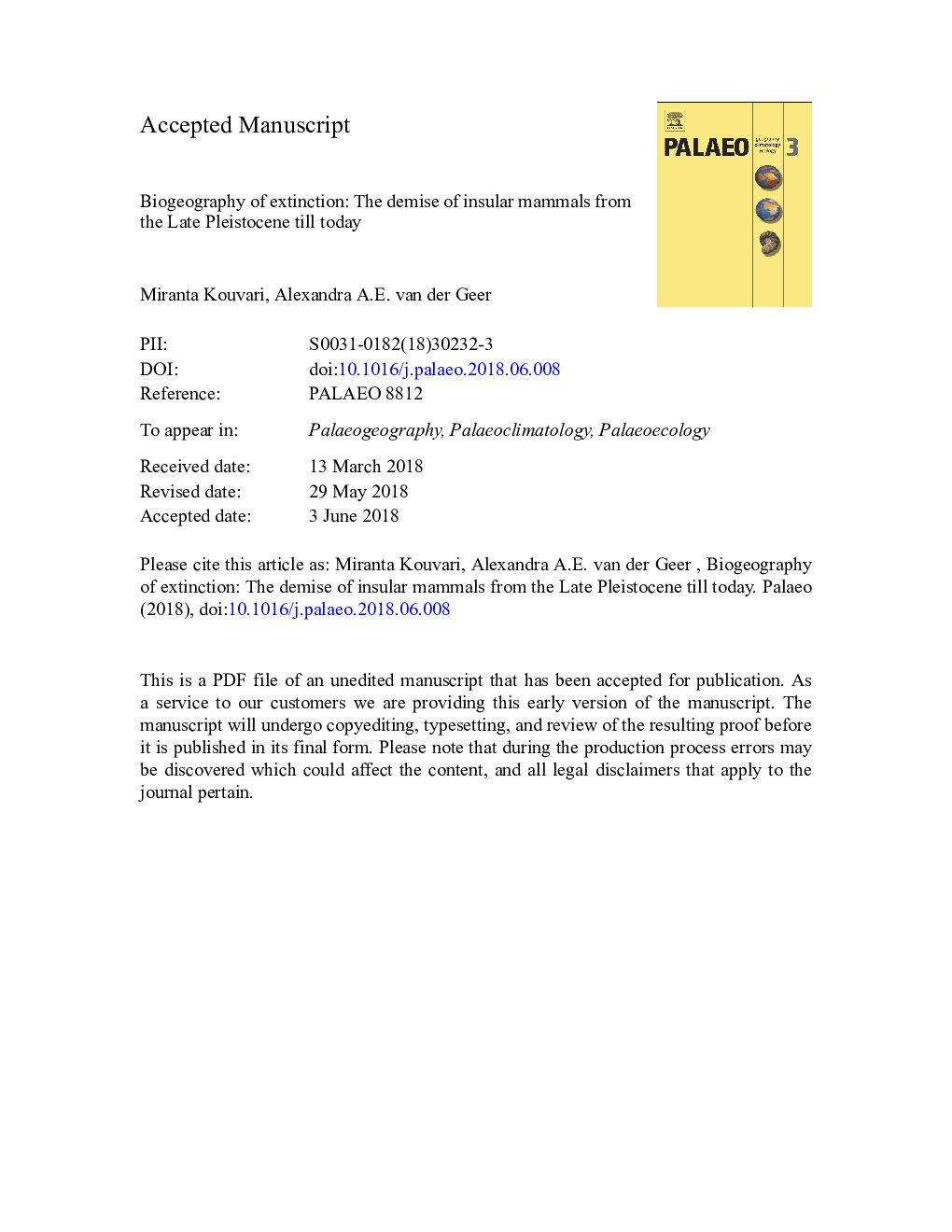| کد مقاله | کد نشریه | سال انتشار | مقاله انگلیسی | نسخه تمام متن |
|---|---|---|---|---|
| 8868159 | 1622087 | 2018 | 39 صفحه PDF | دانلود رایگان |
عنوان انگلیسی مقاله ISI
Biogeography of extinction: The demise of insular mammals from the Late Pleistocene till today
ترجمه فارسی عنوان
بیوگرافی از انقراض: سقوط پستانداران جزیره از پالیستوسن تاخیر تا امروز
دانلود مقاله + سفارش ترجمه
دانلود مقاله ISI انگلیسی
رایگان برای ایرانیان
کلمات کلیدی
هولوسن، تاثیر انسانی، انقراض جزیره، انقراض مگفاونال،
موضوعات مرتبط
مهندسی و علوم پایه
علوم زمین و سیارات
فرآیندهای سطح زمین
چکیده انگلیسی
Extinction, speciation and immigration are the main factors shaping patterns of biodiversity on islands. In particular, the impact of the Late Pleistocene-Holocene extinction wave had a strong impact on the megafauna. Here we investigate the relationship between extinctions of insular endemic mammal species and their body mass, the size of the island and the first human arrival to the archipelago. Our data on islands worldwide show that megafauna was hit hard indeed. All islands lost their heaviest mammal species, whereas maximum surviving mammalian body size differs per archipelago, ranging from heavier than 100â¯kg (Philippines) to below 100â¯g (Canaries) and no surviving native mammals on the Galápagos. Although the number of extinctions is highest on larger islands, in line with predictions following from the species-area relationship, the percentage in relation to total number of endemic species is the lowest. Major part (almost 80%) of extinctions of insular endemics took place after the first human arrival, with the highest percentages during the Late Pleistocene (34.5%) and the Modern Era (31%). This indicates an increased rate of extinctions in the Modern Era, considering the substantially longer time span of the former period. Increased globalisation with introductions of alien species in combination with substantial anthropogenic habitat alteration likely underlies this pattern. Whether these extinction waves follow a fast or slow scenario (“blitzkrieg” versus “sitzkrieg”) remains unclear, but the gradual increase in extinctions through the Holocene, with a peak (31%) in the last 500â¯years, is suggestive of a slow scenario.
ناشر
Database: Elsevier - ScienceDirect (ساینس دایرکت)
Journal: Palaeogeography, Palaeoclimatology, Palaeoecology - Volume 505, 15 September 2018, Pages 295-304
Journal: Palaeogeography, Palaeoclimatology, Palaeoecology - Volume 505, 15 September 2018, Pages 295-304
نویسندگان
Miranta Kouvari, Alexandra A.E. van der Geer,
